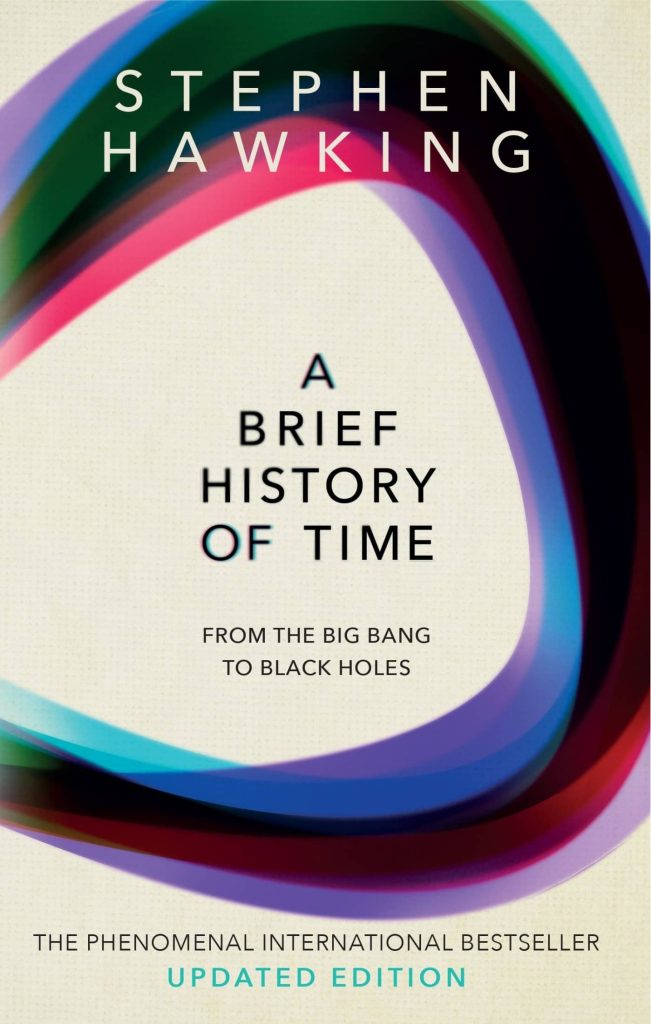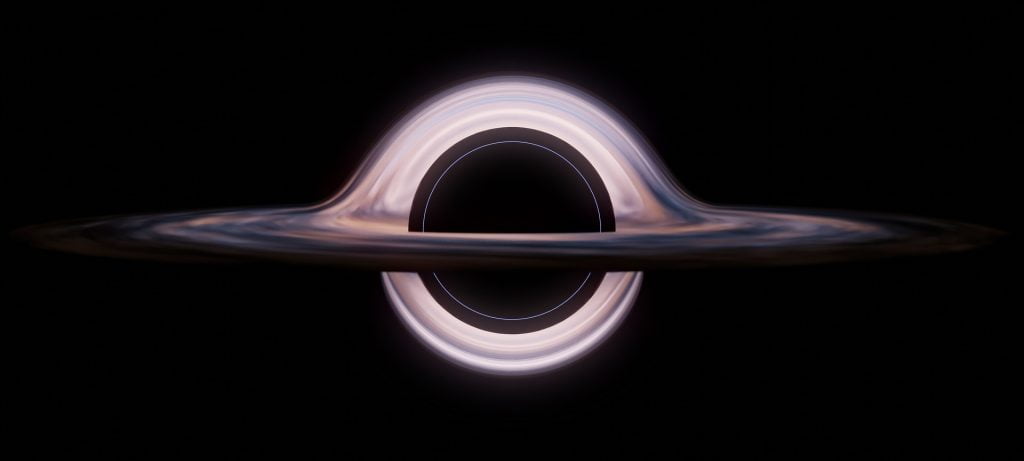
A Brief History of Time attempts to demystify some of the most abstract principles of physics, including space-time, black holes, and quantum gravity, which would help regular folks like you and me to get a complete picture of the history of time itself, as the title suggests.
If time travel is possible, where are the tourists from the future?
Stephen Hawking
Galilei, Kepler, Einstein, and many more throughout the years have altered our perspective on the cosmos, sometimes at a tremendous personal sacrifice. To many, Stephen Hawking represented the pinnacle of theoretical physics brilliance. His research on the Big Bang and cosmological structure (including black holes) shook the foundations of the discipline. Hawking’s own arrogant assessments of his book sales imply that A Brief History of time will have affected the minds of generations in a way only a few other current works will have!
Stephen Hawking’s book, A Brief History of Time, is a seminal work in the history of scientific writing. It was published almost 34 years ago, and since then it has become a classic of scientific literature. One of the most brilliant brains of our time, Stephen Hawking, investigates fundamental issues such, as “How did the universe begin, and what made its beginnings possible?” Is it always the case that time advances? Does space go on forever, or does it terminate somewhere? Is there more than one spatial dimension? In the final analysis, what will occur? These are some of the fundamental inquiries that we as a species have been asking for generations. Using layman’s language, this book discusses complex notions concerning cosmology, physics, the solar system, the big bang, and other things.
Stephen Hawking briskly gives us a tour of the development of scientific ideas throughout the ages in his book A Brief History of Time. While it would be hard to summarize everything that he spoke, the following summarizes some of the most important ideas. These are the main findings and hypotheses that have shaped modern cosmology.

In the beginning, he stares out into the universe. From Aristotle’s idea of geocentricity (earth being the center of the universe) to the acceptance of the Copernican theory which suggested that the sun is at the center and other heavenly bodies revolved around it, we’ve come a long way. Although it took a long time to accept this idea, it didn’t take much time for philosophers to understand the orbital motion of planets. A mathematical explanation for elliptical orbits was given only later by Sir Isaac Newton in his most important single work, Philosophiae Naturalis Principia Mathematica. Newton also posited a law of universal gravitation, which said that every body in the universe was pulled toward every other body by a force that became more powerful as the bodies were more massive and as they became closer to each other.
Moving in further, philosophers started questioning the motion of stars. According to Newton, stars must collapse into each other due to the attractive force. But that doesn’t seem to be the case. Newton argued that this is because there is an infinite number of stars distributed more or less uniformly over an infinite universe. This again baffled other philosophers of that time since the origin and expansion of the universe required divine intervention in it and they wanted to play safe. A few philosophers of the later centuries attempted to answer this question by reason. While most of them were convinced by the idea that the universe had a beginning and the concept of time was meaningless until the universe was created, a few of them still stuck to the idea of the universe having no beginning or end. Edwin Hubble came up with experimental evidence of the expansion of the universe. He observed that distant galaxies are moving farther away at larger speeds. This means that there must have existed a time when all matter and energy were concentrated at a single point of infinite density and a possible “big bang” accounted for the beginning of space and time.
Several different strands of mathematical and physical thought, he claimed, come together in the theory. Simply said, a theory is a model that successfully accounts for and makes sense of a wide range of data. It is the job of scientists to observe the world around them and compile that information in order to come up with theories to explain the occurrence of various events. It hints at the existence of parallel realms or universes and provides explanations for phenomena like the actions of super-massive black holes and the concept of space-time.
With regard to the advantages of theory creation, Hawking cites two:
The theory of universal gravitation that Newton developed shook the world. Newton’s observation of the perpetual motion of the planets in relation to one another lent credence to this idea. Both space and time are subjective and dependent on the perspective of the observer. With everything in perpetual motion, it’s hard to tell whether two events that occurred at separate periods took place in the same location. For various people, time passes at different rates. Since space and time are intrinsically linked, they cannot be studied independently. Each event requires a four-coordinate space-time map, including (a) a time and (b) a location, (c) the position of the observer, and (d) the observer’s velocity.

Newton’s theory replaced the concept of absolute rest with the notion that an object’s motion is relative to that of another, and we have seen how this works. Since we are always moving with respect to fixed reference frames, Newton defined speed as relative to these frames. Although Hawking acknowledges this portion of Newton’s theory, he notes that modern knowledge of the speed of light has cast doubt on it. There can be no such thing as a variable speed of light; it must always remain fixed at c. Newton’s hypothesis is undermined by this observation. How is it possible for a constant speed to exist independently of the observer?
In the early 20th century, when Albert Einstein proposed his theory of relativity, the solution was found. According to Einstein, the scientific rules hold true for observers in whatever direction of motion. That’s why this explanation works for the fact that the speed of light has remained constant throughout history. Because of this, the speed of light remains constant regardless of how fast a free-moving observer travels. This theory is based on the idea that time is contextual rather than absolute.
Once Einstein introduced his general theory of relativity in 1916, gravity became part of the equation. According to Einstein’s theory, space-time is not two-dimensional and does not move in a straight line. It’s like laying something heavy on a piece of stretched-out cloth; it’ll sink because of the weight. Similar to how gravity causes a little curve in space-time rather than a straight line, gravitational effects also cause space-time to bend ever so slightly. Everything in the cosmos can be understood using Einstein’s general theory of relativity. However, it is not comprehensive since it does not address the question of what caused the Big Bang.

Understanding particles—their behavior and velocity—is crucial to comprehend the cosmos. Particles, as Hawking says, are notoriously hard to measure. If you attempt to pinpoint a particle’s location with great accuracy, you’ll also increase the uncertainty of its velocity. Similarly, the more accurately you attempt to quantify its speed, the less definite the particle’s location becomes. In the 1920s, scientists found what is now known as the uncertainty principle to describe this phenomenon. Randomness is tolerated and accounted for in quantum mechanics’ probabilistic framework. It forecasts the probability of different alternative outcomes rather than attempting to anticipate the precise motion of particles to reach a single conclusive conclusion.
Quantum theory requires a deep exploration of the subatomic universe. Everything is thought to be made up of quarks, the tiniest known pieces in the cosmos. That’s because atoms, which are composed of protons and neutrons, are the fundamental constituents of all stuff. Each elementary particle is paired with an antiparticle that may completely wipe out the original (e.g. electron vs positron). In addition, collisions between matter particles bring about powerful forces through the exchange of force-carrying particles.
Scientists began monitoring particles’ quantum states in an effort to circumvent the measurement problems that had previously plagued them. All of a particle’s conceivable locations and velocities are rolled into one when it’s in a quantum state. Scientists may use this kind of analysis to better predict where a particle is hiding. Particle probabilities are maximized in regions where the arcs and dips of the numerous waves line up, and minimized in regions where they do not. What this does is demonstrate the most likely starting and ending points for the particle wave through a phenomenon known as interference.
A black hole is an area in space with gravity so intense that light cannot escape. When the mass is compressed into a small volume, gravity increases. Massive quantities of energy are required for stars to generate their light and heat. As long as the star is still alive, it may harness its energy to prevent its collapse. However, when a star’s fuel runs out, it can no longer fight gravity, and its deteriorating body collapses under its own weight. When a star is very big, its gravitational field may become so powerful that it can become a black hole.

Hawking explains how the demise of massive stars may lead to the formation of black holes. A singularity is a point of infinite density and spherical shape that attracts all matter in its vicinity. A black hole is a singularity like this one. As a result of a black hole’s intense gravitational attraction, the light gets distorted as it travels in its direction. Its powerful gravitational pull also precludes anything from reentering a certain area after entering it. The event horizon, as pointed out by Hawking, is the point beyond which no more action can be taken. The speed of light is the fastest known in the cosmos. In contrast, not even light can make its way out of a black hole. Problems arise while trying to observe black holes since light can’t get out of them. Nonetheless, researchers look for cosmic gravitational effects and x-rays emitted (also known as Hawking Radiation) when stuff is sucked into and torn apart by the black hole.
Time’s inexorable march onward has brought us the worst of all emotions: regret. Physicists have just lately determined why it is the way it is, but people have been wondering about its harsh character since the first time a lance missed its victim.
In Stephen hawking’s brief history of time, he argues that time’s forward momentum is made possible by the expansion of the universe. A minority of researchers, though, remain open to the idea that the universe may eventually start to collapse and time could begin to flow backward. There are many unanswered questions, such as whether we can travel in time or if we can time travel to the future. Despite this, according to Hawking, there are a number of compelling signs indicating that time can only advance.
Or? Is time a human idea or simply a preset notion in our subconscious minds that we have labeled for our convenience? Time is a logical creation that allowed the brain to comprehend the order of actions and their subsequent consequences. It would no longer make sense if time could alter momentum if we assumed that it could. Therefore, even if an action followed by a consequence may affect the result, such as if time reversed backward, people would still have the impression that time is always flowing in a forward direction.